Define collapsed lung. Pneumothorax: Understanding Collapsed Lung Causes, Symptoms, and Treatment
What is pneumothorax. How does a collapsed lung occur. What are the symptoms of pneumothorax. What causes a collapsed lung. How is pneumothorax diagnosed. What are the treatment options for pneumothorax. Can pneumothorax be prevented.
What is Pneumothorax? Defining Collapsed Lung
Pneumothorax, commonly known as collapsed lung, is a serious medical condition characterized by the presence of air or gas in the pleural cavity – the space between the lung and the chest wall. This accumulation of air causes the lung to collapse, leading to respiratory distress and other complications.
The term “pneumothorax” is derived from the Greek words “pneumo” (air) and “thorax” (chest). It occurs when the delicate balance of pressure within the chest cavity is disrupted, allowing air to enter the pleural space and compress the lung.
Types of Pneumothorax
There are several types of pneumothorax, each with distinct causes and characteristics:

- Spontaneous pneumothorax: Occurs without apparent cause or injury
- Traumatic pneumothorax: Results from chest injuries or medical procedures
- Tension pneumothorax: A life-threatening condition where air continues to accumulate in the pleural space
- Catamenial pneumothorax: Occurs in women in conjunction with menstrual cycles
Causes of Pneumothorax: Understanding the Risk Factors
Pneumothorax can occur due to various factors, ranging from underlying medical conditions to traumatic injuries. Understanding these causes is crucial for prevention and proper management.
Spontaneous Pneumothorax Causes
Spontaneous pneumothorax is further categorized into primary and secondary types:
- Primary spontaneous pneumothorax: Typically affects tall, thin young adults with no apparent lung disease
- Secondary spontaneous pneumothorax: Occurs in individuals with pre-existing lung conditions such as COPD, cystic fibrosis, or lung cancer
Traumatic Pneumothorax Causes
Traumatic pneumothorax can result from:
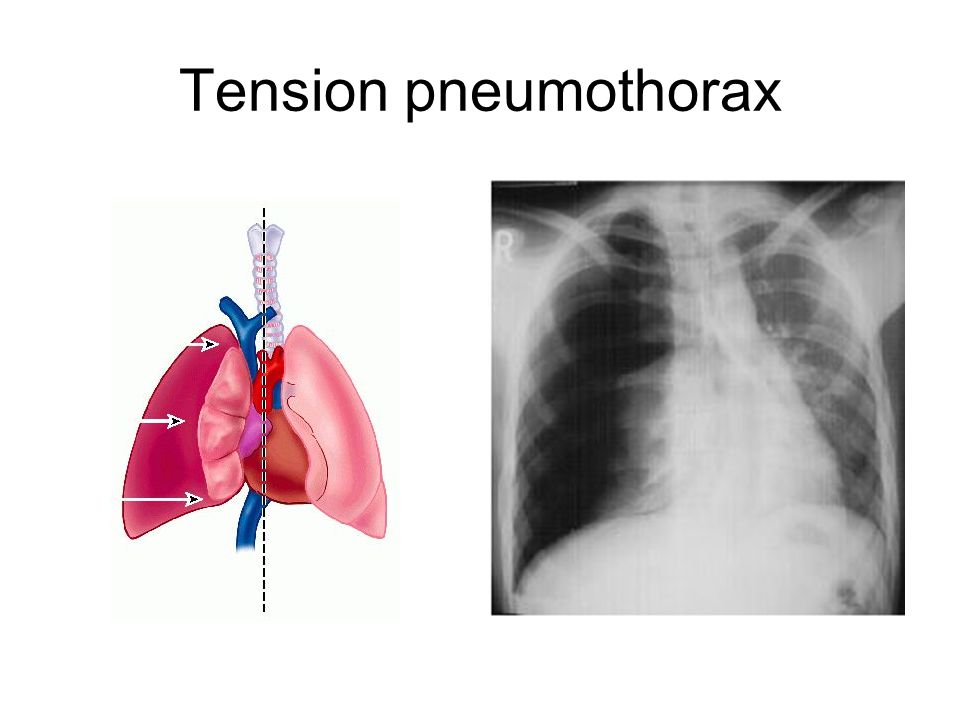
- Penetrating chest injuries (e.g., gunshot wounds, stab wounds)
- Blunt force trauma to the chest
- Iatrogenic causes (medical procedures like central line placement or lung biopsies)
Recognizing Pneumothorax Symptoms: When to Seek Medical Attention
The symptoms of pneumothorax can vary in severity and may develop suddenly or gradually. It’s essential to recognize these signs to seek prompt medical attention.
Common Pneumothorax Symptoms
- Sudden, sharp chest pain on the affected side
- Shortness of breath or difficulty breathing
- Rapid heartbeat
- Dry, hacking cough
- Bluish skin color (cyanosis) due to lack of oxygen
- Fatigue and weakness
In some cases, particularly with small pneumothoraces, symptoms may be mild or even absent. However, any suspicion of a collapsed lung warrants immediate medical evaluation.
Diagnosing Pneumothorax: Medical Imaging and Clinical Assessment
Accurate diagnosis of pneumothorax is crucial for appropriate treatment. Healthcare providers employ various diagnostic tools and techniques to confirm the presence and extent of a collapsed lung.

Physical Examination
A thorough physical examination is the first step in diagnosing pneumothorax. The healthcare provider will:
- Listen to breath sounds using a stethoscope
- Assess chest movement during breathing
- Check for signs of respiratory distress
- Evaluate skin color and oxygen saturation
Imaging Studies
Medical imaging plays a crucial role in confirming the diagnosis and determining the size and location of the pneumothorax:
- Chest X-ray: The primary imaging tool for diagnosing pneumothorax
- CT scan: Provides more detailed images, especially for small pneumothoraces
- Ultrasound: Increasingly used for rapid bedside diagnosis, particularly in emergency settings
Treatment Options for Pneumothorax: From Observation to Surgery
The treatment of pneumothorax depends on its size, cause, and the patient’s overall health. The primary goal is to remove the excess air from the pleural space and prevent recurrence.
Conservative Management
For small, uncomplicated pneumothoraces:
- Observation and monitoring
- Supplemental oxygen therapy
- Pain management
Needle Aspiration and Chest Tube Insertion
For larger pneumothoraces or those causing significant symptoms:

- Needle aspiration: Removing air using a needle and syringe
- Chest tube insertion: Placing a tube to continuously drain air from the pleural space
Surgical Interventions
In cases of recurrent or persistent pneumothorax:
- Video-assisted thoracoscopic surgery (VATS)
- Pleurodesis: Sealing the pleural space to prevent recurrence
- Bullectomy: Removal of blebs or bullae in the lung
Preventing Pneumothorax: Lifestyle Changes and Risk Reduction
While not all cases of pneumothorax can be prevented, certain measures can help reduce the risk, especially for those with a history of lung disease or previous pneumothorax.
Smoking Cessation
Quitting smoking is one of the most effective ways to reduce the risk of pneumothorax. Smoking damages lung tissue and increases the likelihood of developing blebs and bullae, which can rupture and cause air leaks.
Avoiding Sudden Pressure Changes
Individuals with a history of pneumothorax or certain lung conditions should take precautions:
- Avoid scuba diving
- Consult a doctor before air travel
- Use caution with activities that involve rapid altitude changes
Managing Underlying Lung Conditions
Proper management of chronic lung diseases can help prevent secondary spontaneous pneumothorax:
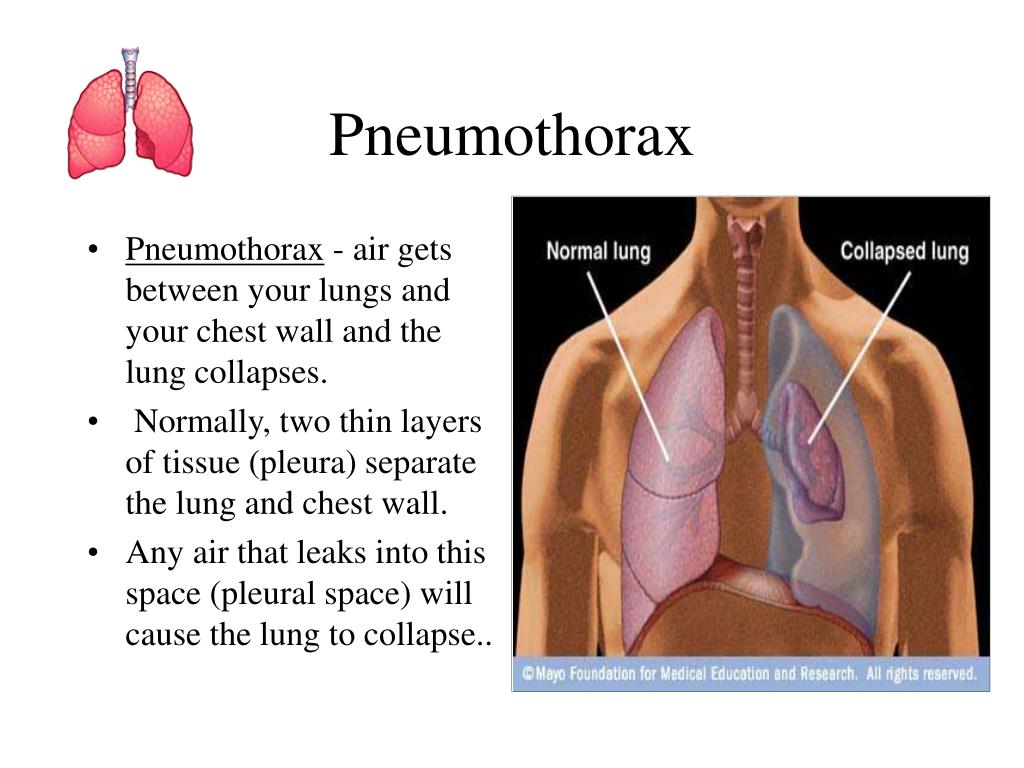
- Adherence to prescribed medications
- Regular check-ups with a pulmonologist
- Participation in pulmonary rehabilitation programs
Pneumothorax Complications: Understanding Potential Risks
While many cases of pneumothorax resolve with proper treatment, complications can occur, especially if left untreated or in severe cases.
Tension Pneumothorax
A tension pneumothorax is a life-threatening emergency that occurs when air continues to accumulate in the pleural space, creating pressure that can:
- Compress the heart and large blood vessels
- Impair blood flow to vital organs
- Cause respiratory failure
Recurrence
Recurrent pneumothorax is a significant concern, particularly for those with primary spontaneous pneumothorax. The risk of recurrence can be as high as 50% within the first few years after the initial episode.
Chronic Lung Issues
Repeated episodes of pneumothorax can lead to long-term lung problems, including:
- Decreased lung function
- Chronic pain
- Increased risk of respiratory infections
Living with Pneumothorax: Recovery and Long-term Management
Recovery from pneumothorax varies depending on the severity and treatment method. Understanding the recovery process and long-term management strategies is crucial for patients and their caregivers.

Recovery Timeline
The recovery period for pneumothorax can range from a few days to several weeks:
- Small pneumothoraces may resolve on their own within 1-2 weeks
- Larger pneumothoraces treated with chest tubes may require 5-7 days of hospitalization
- Surgical interventions may necessitate a longer recovery period of 2-4 weeks
Follow-up Care
Regular follow-up appointments are essential to monitor lung function and prevent recurrence:
- Chest X-rays to ensure complete lung re-expansion
- Pulmonary function tests to assess lung capacity
- Discussion of lifestyle modifications and risk reduction strategies
Emotional and Psychological Support
Experiencing a pneumothorax can be emotionally challenging. Patients may benefit from:
- Counseling or support groups
- Stress reduction techniques
- Education about their condition to alleviate anxiety
By understanding the causes, symptoms, and treatment options for pneumothorax, individuals can be better prepared to recognize and respond to this potentially serious condition. Early intervention and proper management are key to achieving the best possible outcomes and preventing complications. As medical research continues to advance, new techniques and treatments may emerge, offering hope for improved care and quality of life for those affected by pneumothorax.

Pneumothorax Definition & Meaning | Dictionary.com
- Games
- Featured
- Pop culture
- Writing tips
Top DefinitionsExamplesBritishScientific
[ noo-muh-thawr-aks, -thohr-, nyoo- ]
nounPathology.
the presence of air or gas in the pleural cavity.
Origin of pneumothorax
1
From New Latin, dating back to 1815–25; see origin at pneumo-, thorax
Words Nearby pneumothorax
- pneumonitis
- pneumono-
- pneumonoconiosis
- pneumonoultramicroscopicsilicovolcanoconiosis
- pneumostome
- pneumothorax
- pneumotropic
- PNG
- PNI
- p-n junction
- pnld
Dictionary.com Unabridged
Based on the Random House Unabridged Dictionary, © Random House, Inc. 2023
How to use pneumothorax in a sentence
This condition is known as pneumothorax and may result in collapse of the lung.

Special Report on Diseases of the Horse | United States Department of Agriculture
An accumulation of gas in the pleural sac is known as pneumothorax.
Special Report on Diseases of Cattle | U.S. Department of Agriculture
Pyo-pneumothorax, abscess, and gangrene of the lung may result from perforation of the pleura or of the lung by gastric cancer.
A System of Practical Medicine By American Authors, Vol. II | Various
British Dictionary definitions for pneumothorax
pneumothorax
/ (ˌnjuːməʊˈθɔːræks) /
noun
the abnormal presence of air between the lung and the wall of the chest (pleural cavity), resulting in collapse of the lung
med the introduction of air into the pleural cavity to collapse the lung: a former treatment for tuberculosis
Collins English Dictionary – Complete & Unabridged 2012 Digital Edition
© William Collins Sons & Co. Ltd. 1979, 1986 © HarperCollins
Ltd. 1979, 1986 © HarperCollins
Publishers 1998, 2000, 2003, 2005, 2006, 2007, 2009, 2012
Scientific definitions for pneumothorax
pneumothorax
[ nōō′mō-thôr′ăks′ ]
Accumulation of a gas, such as air, in the space between the pleurae of the lungs and the pleurae lining the chest wall (called the pleural cavity), occurring as a result of disease or injury or induced to collapse the lung in the treatment of tuberculosis and other lung diseases. A large pneumothorax is treated by inserting a syringe or a tube into the pleural cavity to aspirate air, which helps the collapsed lung to expand.
The American Heritage® Science Dictionary
Copyright © 2011. Published by Houghton Mifflin Harcourt Publishing Company. All rights reserved.
Pneumothorax | Definition, Causes, & Treatment
pneumothorax
See all media
- Related Topics:
- hemothorax
pyothorax
See all related content →
pneumothorax, condition in which air accumulates in the pleural space, causing it to expand and thus compress the underlying lung, which may then collapse. (The pleural space is a cavity formed by the two pleural membranes that line the thoracic cavity and cover the lungs.) Different classifications are used to describe the various types of pneumothoraxes, though two major types commonly are recognized: traumatic pneumothorax, which includes accidental and iatrogenic (medically caused) pneumothoraxes, and spontaneous (nontraumatic) pneumothorax.
(The pleural space is a cavity formed by the two pleural membranes that line the thoracic cavity and cover the lungs.) Different classifications are used to describe the various types of pneumothoraxes, though two major types commonly are recognized: traumatic pneumothorax, which includes accidental and iatrogenic (medically caused) pneumothoraxes, and spontaneous (nontraumatic) pneumothorax.
Traumatic pneumothorax is the accumulation of air caused by penetrating chest wounds (e.g, knife stabbing, gunshot) or other injuries to the chest wall, after which air is sucked through the opening and into the pleural sac. Similar injury can be caused by invasive medical procedures, such as fine needle aspiration or pleural biopsy, resulting in iatrogenic pneumothorax.
Britannica Quiz
44 Questions from Britannica’s Most Popular Health and Medicine Quizzes
Spontaneous pneumothorax is the passage of air into the pleural sac from an abnormal connection created between the pleura and the bronchial system. It may be characterized as either of two types: primary, in which the patient has no prior thoracic trauma or predisposing lung condition, or secondary, being associated with bullous emphysema or some other lung disease. The symptoms of spontaneous pneumothorax are a sharp pain in one side of the chest and shortness of breath.
It may be characterized as either of two types: primary, in which the patient has no prior thoracic trauma or predisposing lung condition, or secondary, being associated with bullous emphysema or some other lung disease. The symptoms of spontaneous pneumothorax are a sharp pain in one side of the chest and shortness of breath.
Pneumothorax may also be described as either a simple pneumothorax, without effects on the heart or mediastinal structures, or as a tension pneumothorax, which is a life-threatening condition. Tension pneumothorax can occur as a result of trauma, lung infection, or medical procedures, such as high-pressure mechanical ventilation, chest compression during cardiopulmonary resuscitation (CPR), or thoracoscopy (closed-lung biopsy). In contrast to traumatic pneumothorax and spontaneous pneumothorax, in tension pneumothorax the air that becomes trapped in the pleural space cannot escape. As a result, with each breath the patient inhales, air and pressure accumulate within the chest.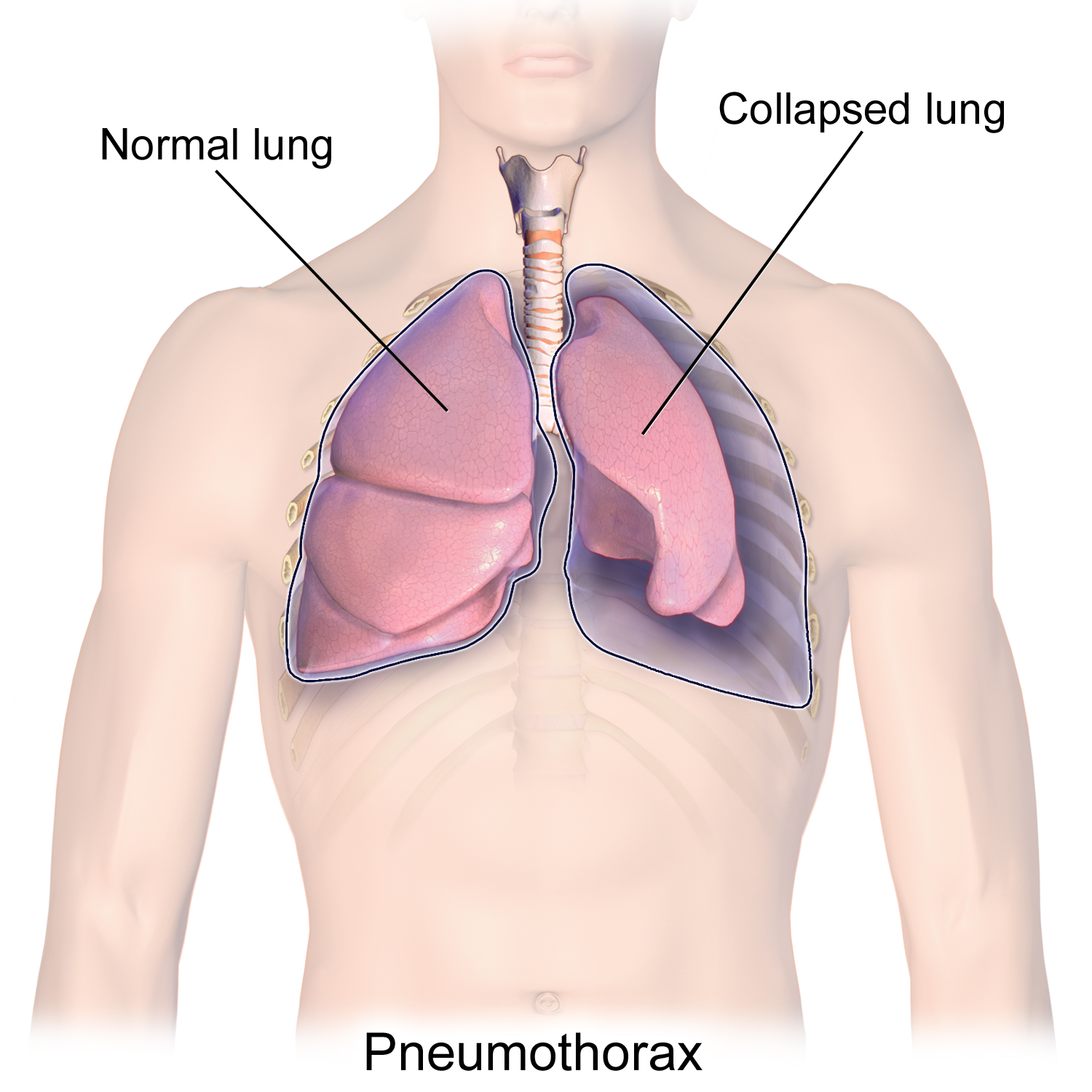 When the lung on the affected side of the chest collapses, the heart, blood vessels, and airways are pushed to the centre of the chest, thereby compressing the other lung. This leads to decreases in blood pressure, consciousness, and breathing that in turn may lead to shock and death.
When the lung on the affected side of the chest collapses, the heart, blood vessels, and airways are pushed to the centre of the chest, thereby compressing the other lung. This leads to decreases in blood pressure, consciousness, and breathing that in turn may lead to shock and death.
Most pneumothoraxes can be treated by inserting a tube through the chest wall. This procedure allows air to escape from the chest cavity, which enables the lung to re-expand. In some cases, a catheter connected to a vacuum system is required to re-expand the lung. While small pneumothoraxes may resolve spontaneously, others may require surgery to prevent recurrences.
This article was most recently revised and updated by Kara Rogers.
How to determine lung atelectasis | Reference book of the therapist of the Clinic EndoMedLab, Moscow (m. Dmitrovskaya, m. Savelovskaya, m. Timiryazevskaya)
* Biomaterial sampling is paid separately
- Main
- Analyzes
- Directory of Diseases
- Lung atelectasis
More about the doctor
Pulmonary atelectasis – collapse of lung tissue or its incomplete expansion with subsequent disturbance of gas exchange.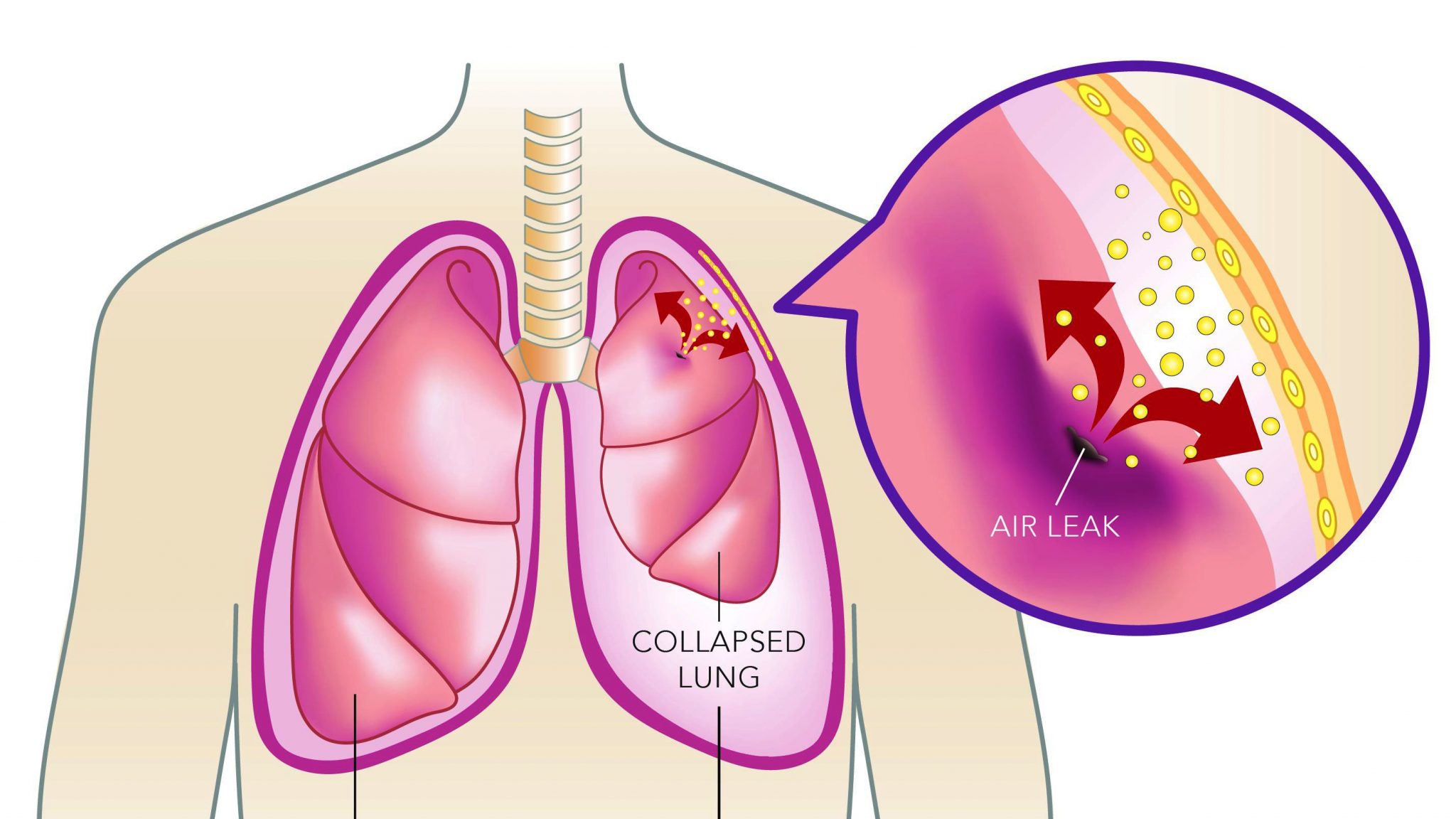 It can be total and local. If the compression of the lung and its consequence – alveolar atelectasis occur as a result of external influences, the pathology is called “lung collapse”.
It can be total and local. If the compression of the lung and its consequence – alveolar atelectasis occur as a result of external influences, the pathology is called “lung collapse”.
Causes of pulmonary alectasis
Atelectasis can be congenital or acquired . The primary form occurs in newborns as a result of aspiration of the respiratory tract with amniotic fluid or mucus. Most often, premature babies suffer because they have insufficient levels of surfactant, a substance that prevents the collapse of the alveoli. In some cases, atelectasis may be due to a malformation of the lungs or intracranial birth trauma.
Secondary atelectasis develops in various diseases of the respiratory tract, chest trauma, aspiration of the respiratory tract by a foreign body or food masses.
Symptoms
The severity of signs of pathology depends on the rate of collapse of the alveoli and the volume of tissue excluded from gas exchange. Focal atelectasis may be asymptomatic, while the clinical picture with damage to a lobe or the whole lung is very bright. There is pain in the chest on the side of the lesion. The patient suffers from shortness of breath and dry cough. There is a decrease in blood pressure and tachycardia begins. Rapid progression of respiratory failure can lead to death. An increase in temperature and the phenomena of general intoxication appear only in the case of the development of an inflammatory process.
There is pain in the chest on the side of the lesion. The patient suffers from shortness of breath and dry cough. There is a decrease in blood pressure and tachycardia begins. Rapid progression of respiratory failure can lead to death. An increase in temperature and the phenomena of general intoxication appear only in the case of the development of an inflammatory process.
Diagnostic methods
The final diagnosis is based on the examination of the patient:
- Clinical blood test. With the development of inflammation, there will be nonspecific signs in it – leukocytosis, a shift of the leukocyte formula to the left and an increase in ESR.
- Blood gases . Characterizes the efficiency of gas exchange and the level of tissue metabolism.
- Histological examination. After surgical treatment, the removed area of the lung is sent for histology, which allows you to establish the etiology of the disease.
- X-ray of lungs .
 Perform in two projections. The picture will show shading, mediastinal shift towards the lesion, high standing of the diaphragmatic dome and increased airiness of healthy lung tissue.
Perform in two projections. The picture will show shading, mediastinal shift towards the lesion, high standing of the diaphragmatic dome and increased airiness of healthy lung tissue. - Bronchoscopy . Helps to find out the causes of the collapse of the lung tissue.
- Lung CT . Assign with questionable results of x-rays.
- Bronchography . Assesses the degree of damage to the lung tissue. It reveals a decrease in the volume of the affected organ, convergence of the branches of the bronchial tree and pathological changes in the bronchi.
- Angiopulmonography . Allows you to judge the state of the parenchyma of the lung and the depth of its damage.
During the examination, differential diagnosis is carried out with lung hypoplasia, diaphragmatic hernia, lung cyst, lobar pneumonia, mediastinal neoplasms and other pathologies.
Treatment of alectasis of the lung
Treatment of pathology depends on its form and causes, but in any case, all patients are prescribed antibiotics for prophylactic purposes.
In newborns, the mucus is aspirated immediately and the airways cleared. Premature babies are given a surfactant. In case of aspiration by a foreign body, therapeutic and diagnostic bronchoscopy is performed, and in case of difficult-to-separate secretion, which has become the cause of atelectasis, bronchial-alveolar lavage is performed (endoscopic sanitation).
Where to submit?
Analyzes
at homeResults of
testsUnique
assays
Radiography of the acromioclavicular joint in Rostov-on-Don
The acromioclavicular joint is visible on the images of the scapula, clavicle and shoulder joint in direct projection. To clarify the ratios of the bones in this joint, an aiming radiograph is taken. Most often, an X-ray of a broken rib is taken to diagnose a fracture that is the result of an injury. X-ray of the child’s ribs allows you to determine the nature of bone damage, to identify the onset of lung collapse, pneumothorax and other complications. Diagnosis of lesions in adults is carried out in the same way as in children.
To clarify the ratios of the bones in this joint, an aiming radiograph is taken. Most often, an X-ray of a broken rib is taken to diagnose a fracture that is the result of an injury. X-ray of the child’s ribs allows you to determine the nature of bone damage, to identify the onset of lung collapse, pneumothorax and other complications. Diagnosis of lesions in adults is carried out in the same way as in children.
Chest injuries in children come in many forms. These are bruises, concussions, compression (with and without bone damage). Rib fractures are most often diagnosed in the posterior and posterolateral sections of the chest. In this case, the VIII and IX ribs are most often damaged. The fracture is accompanied by pain, which increases with movement, coughing, deep breathing, with pressure on the chest in the sagittal or frontal direction. The mobility of a broken rib is often felt. Injury to internal organs is aggravated by hemoptysis, subcutaneous emphysema, hemothorax.
Preparation for procedure
Radiography of the ribs does not require special preparation.
The patient is put, planted or laid in the desired position, 3-5 shots are taken. To identify a spinal injury, a picture is usually taken in 2 projections. Jewelry must be removed before turning on the device. And also undress to the waist and remove long hair from the neck. An x-ray of the spine is taken on an empty stomach.
How is the procedure
When the patient is in the correct position, the radiologist sets up the x-ray tube and takes a picture. During this time, the patient should be motionless, hold his breath while exhaling. Having received a picture, the doctor deciphers it. Then he gives the finished result to the patient along with the conclusion.
X-ray of the ribs is performed in the form of 3-5 shots, in the anteroposterior projection (in the usual version) or with a load in hand.
The patient is placed with his back to a vertical stance, the shoulders are laid back, the chest is protruded.
The arms are extended along the body.

The radiation beam is directed perpendicular to the film. The central beam shines through the notch of the sternum into the center of the cassette. The central horizontal line passes through both clavicular-acromial joints. Before starting the device, the patient holds his breath while exhaling.
If the image is taken correctly, then the clavicle is clearly visible on it, including the sternoclavicular and acromioclavicular joints (without overlays).
How often can x-rays be taken
X-rays can be taken several times a year if there are medical indications. The procedure is simple, painless and fast. However, there are categories of patients for whom long-term exposure is undesirable (cancer patients). Since an overdose can provoke the development of malignant tumors. Therefore, for this category of patients, X-rays are performed no more than 2-3 times a year, under the strict supervision of a physician. X-rays are not prescribed for children and pregnant women, as there are more gentle methods (ultrasound, computed tomography).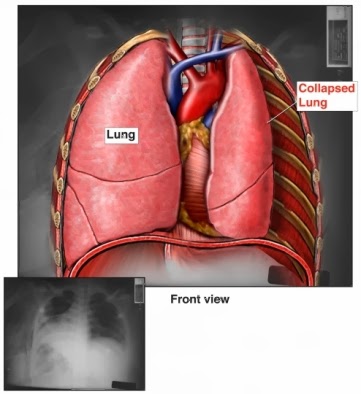


 Perform in two projections. The picture will show shading, mediastinal shift towards the lesion, high standing of the diaphragmatic dome and increased airiness of healthy lung tissue.
Perform in two projections. The picture will show shading, mediastinal shift towards the lesion, high standing of the diaphragmatic dome and increased airiness of healthy lung tissue.